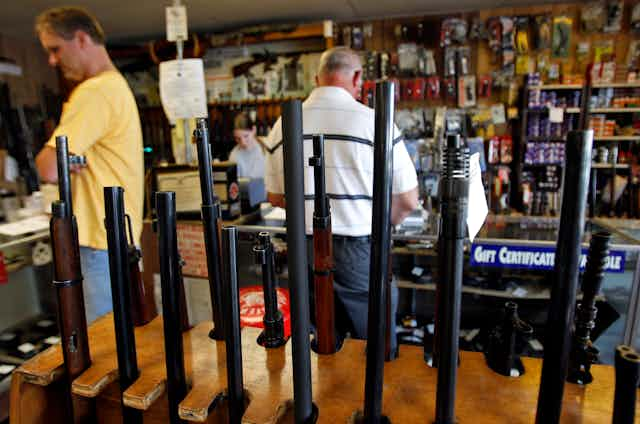

Jonathan Parker ne travaille pas, ne conseille pas, ne possède pas de parts, ne reçoit pas de fonds d'une organisation qui pourrait tirer profit de cet article, et n'a déclaré aucune autre affiliation que son organisme de recherche.
Keele University apporte un financement en tant que membre adhérent de The Conversation UK.
Voir les partenaires de The Conversation France
The Second Amendment to the Constitution is a touchstone for the many people who identify with American society’s enduring affinity for firearms. And every time there is an atrocity, such as the mass shooting in Orlando, debate inevitably settles on how this part of the Constitution effectively prevents the adoption of workable gun control measures.
But ironically, the Amendment played almost no substantial part in legal or constitutional jurisprudence involving gun ownership until 2008 and even the recent change in Supreme Court interpretations does not give it a significant role in gun regulation. The importance of the Second Amendment lies much more in its symbolism for those people defending gun ownership and as a rallying point for those supporters.
The Amendment is a telling reminder of America’s longstanding relationship with guns that goes back to its colonial heritage and has developed a strong and popular mythology surrounding this legacy. But it is not a clear endorsement of the right to own a gun. The text reads:
A well regulated Militia, being necessary to the security of a free State, the right of the people to keep and bear Arms, shall not be infringed.
The Amendment came out of the colonies’ longstanding suspicion of standing armies, accentuated by the recent War of Independence against Great Britain. It sought to enshrine protections for local and state militias, who would provide a bulwark against any possible encroachment of power by the new national government – and its national army – which was established by the Constitution in 1789.
The Second Amendment was always about federalism, protecting the power of the states to have and regulate militias rather than granting individual rights, and the courts interpreted it that way consistently until two cases in 2008 and 2010 completely upended more than two centuries of legal and constitutional history.
In the case of District of Columbia v. Heller, 554 U.S. 570 (2008), the Supreme Court held that the Second Amendment protects an individual right to possess a firearm – independent of any service in a militia – for legal purposes such as self-defence. In a subsequent case, McDonald v. Chicago, 561 U.S. 3025 (2010), the Court extended this protection against bans by all state and local governments.

States adopted this approach, with 41 adopting laws allowing the carrying of concealed guns by 2014. Debates rage over whether this availability makes the public more or less safe, but it is the sharp edge of the current debate in the states. Meanwhile, in Sandy Hook, Newtown – and now Orlando – hundreds of families continue to mourn their dead as mass shootings continue with a dispiriting regularity.